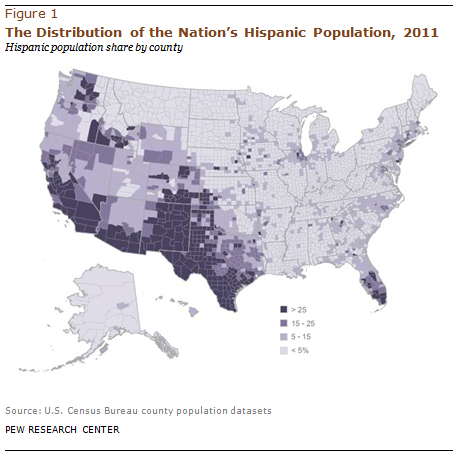Mapping the Latino Population, By State, County and City

The Pew Research Center's Hispanic Trends Project annually produces reports, databases and interactive maps showing the current geographic concentration of Hispanics throughout the U.S. and how that distribution has changed since 1980.
These maps and databases are largely based on the most recent data from the U.S. Census Bureau's American Community Survey. Accompanying these maps are statistical profiles of the Hispanic population in each of the 50 states and the District of Columbia along with statistical profiles of the Hispanic population in the 60 largest metropolitan areas.
View the full report and interactives on the Pew Research Center's Hispanic Trends Project website.
Downloads
Full Report
Downloads
Full Report



